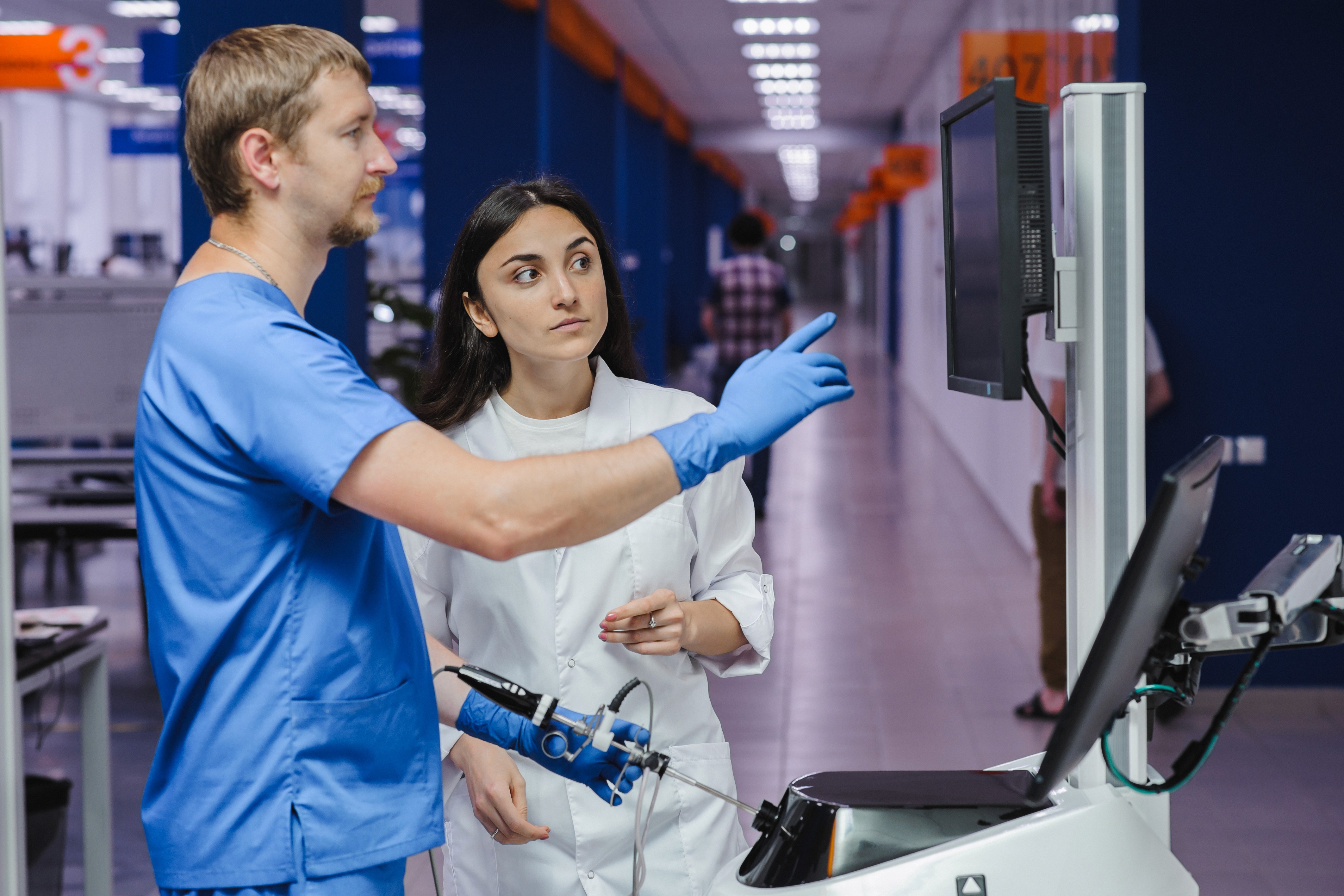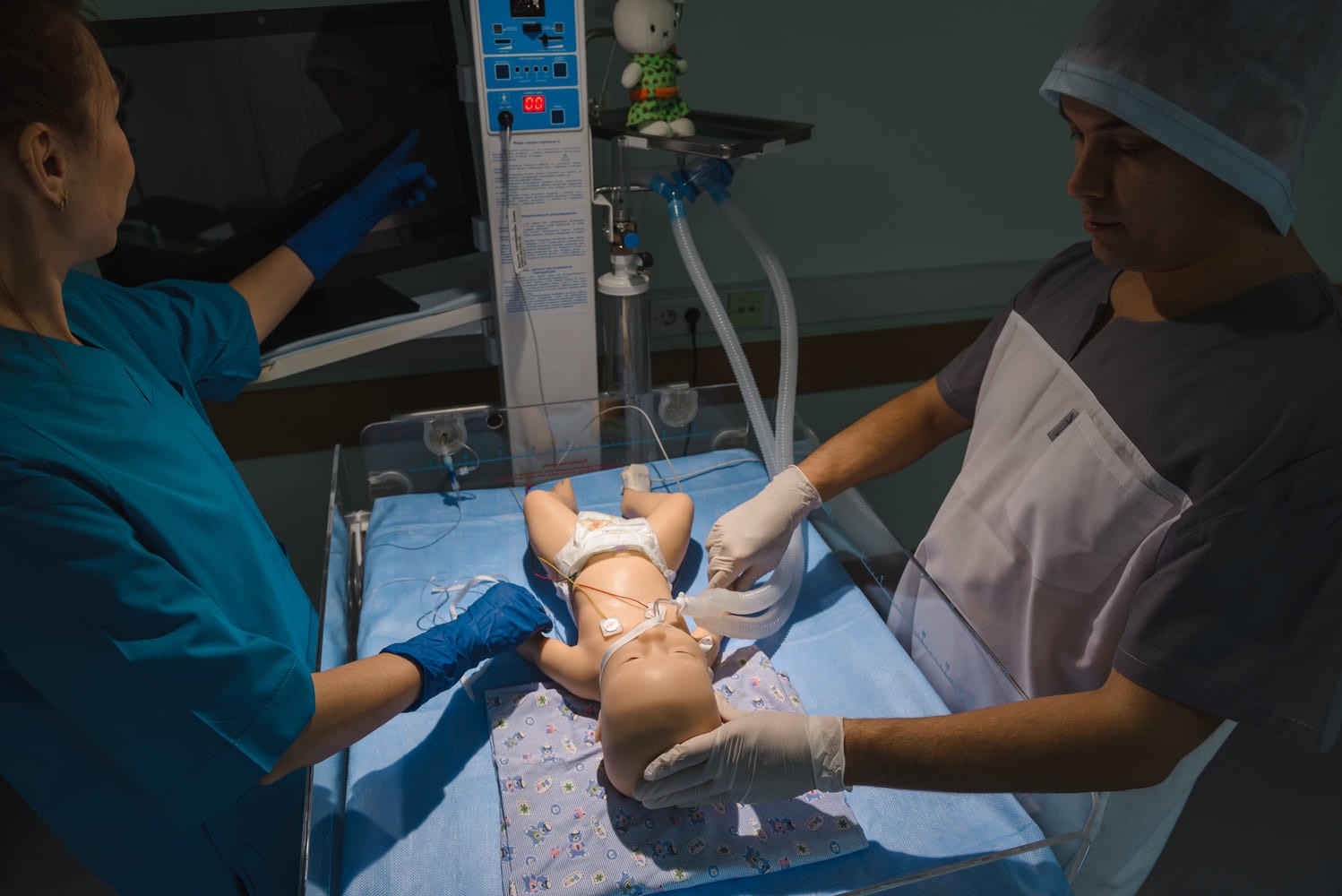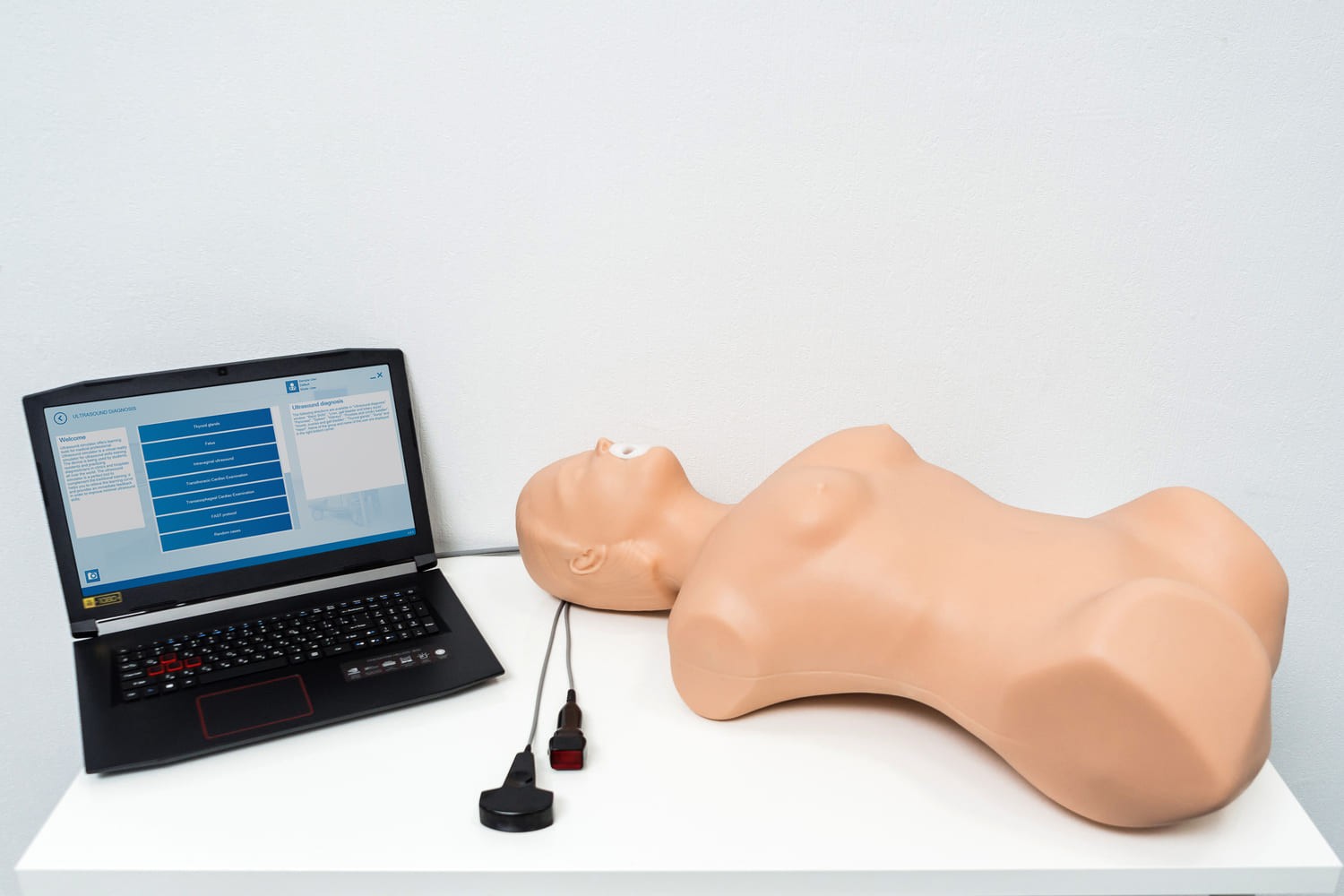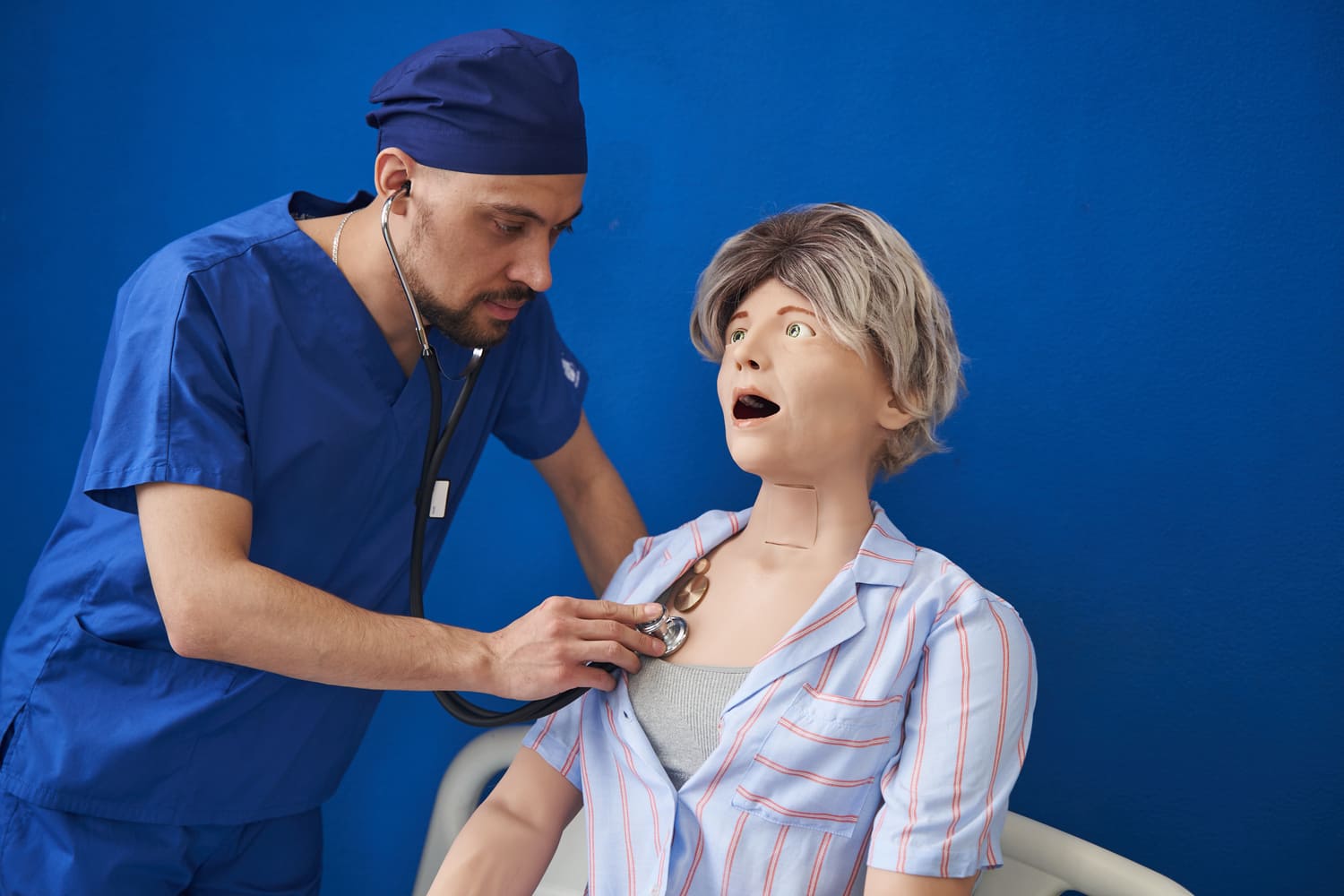
Transforming Education: Simulation for Medical Students
What is Simulation for Medical Students?
Imagine standing at the threshold of your medical career, hands trembling as you prepare to tackle your first life-or-death situation. Now, imagine being able to rehearse that moment — minus the panic and real-world consequences. This is the essence of simulation: an extraordinary training tool bridging the gap between classroom theory and clinical practice.
For medical students, simulation transforms theoretical concepts into vivid, interactive experiences. It immerses learners in lifelike scenarios, allowing them to practice critical skills, from diagnosing complex conditions to performing delicate surgical procedures. By enabling repeated exposure to clinical situations, simulation fosters confidence, precision, and the kind of instinctive decision-making that separates good practitioners from great ones.

Why is Simulation Indispensable for Medical Students?
1. Hands-On Learning in a Safe Environment
There’s no room for trial and error in a real hospital. Simulation provides a controlled setting where students can make mistakes, learn from them, and refine their skills — all without jeopardizing patient safety. For example, MedVision’s Leonardo simulator replicates adult human anatomy with astonishing accuracy, allowing students to practice everything from basic assessments to advanced interventions.
2. Bridging the Gap Between Textbooks and Reality
No amount of textbook study can fully prepare a student for the dynamic, unpredictable nature of medicine. Simulation bridges this gap by recreating real-life medical challenges. Be it diagnosing a rare condition or navigating a high-stakes emergency, students learn to think critically and act decisively.
3. Cultivating Soft Skills
Beyond technical know-how, simulation hones communication, empathy, and teamwork. For instance, a simulated pediatric emergency using MedVision’s Arthur teaches students not just how to stabilize a child’s vitals but also how to reassure anxious parents and collaborate with colleagues under pressure.
Types of Simulation for Medical Students
1. High-Fidelity Manikins: More Than Just Plastic Patients
Manikins have evolved from static dummies to hyper-realistic models that breathe, bleed, and even respond emotionally. These advanced tools enable students to practice procedures ranging from CPR to complex surgeries. MedVision’s Mia neonatal simulator, for example, helps students master newborn resuscitation techniques with unparalleled realism.
2. Virtual Reality (VR): The Future of Medical Training
VR creates immersive, 3D environments where students can explore the human body, rehearse surgeries, or respond to simulated emergencies. This technology eliminates geographical and resource constraints, making top-tier medical education accessible to students worldwide.
3. Hybrid Simulations
Combining physical manikins with virtual scenarios, hybrid simulations offer the best of both worlds. They’re particularly effective for multi-faceted cases, such as trauma management, where students must address physical injuries while monitoring virtual vital signs.
4. Role-Playing Scenarios
Sometimes, the most valuable lessons come from stepping into someone else’s shoes. In role-playing simulations, students adopt various roles — doctor, patient, nurse — to understand different perspectives and improve interpersonal skills.

How MedVision Enhances Simulation for Medical Students
MedVision isn’t just part of the simulation revolution — it’s leading it. With a portfolio tailored to the unique needs of medical students, MedVision offers:
- Versatility: From adult care (Leonardo) to neonatal emergencies (Mia), their simulators cover every stage of life and specialty.
- Realism: MedVision’s high-fidelity manikins mimic physiological responses with unmatched accuracy, offering students an authentic clinical experience.
- Accessibility: Comprehensive installation, training, and post-sale support ensure that institutions and students maximize their simulation investments.
Educators worldwide praise MedVision for its commitment to quality and innovation, while students appreciate the intuitive, stress-free learning environment their simulators provide.
The Impact of Simulation on Medical Education
1. Enhanced Confidence
Simulation enables students to face complex medical scenarios repeatedly until they master them. This repetition builds confidence — a crucial trait for any aspiring healthcare provider.
2. Reduced Medical Errors
Studies show that simulation-based training significantly reduces medical errors, translating to safer patient outcomes. By allowing students to practice in a zero-risk environment, simulation ensures they’re better prepared for real-world challenges.
3. Better Adaptability
Medicine is an ever-evolving field. Simulation equips students with the adaptability to handle new technologies, treatments, and challenges.
Real-World Applications of Simulation for Medical Students
1. Emergency Response Training
In critical care and emergency medicine, every second counts. Simulation equips medical students with the ability to act swiftly and decisively in high-stakes situations. For instance, using MedVision’s Arthur, students can rehearse stabilizing a pediatric patient in cardiac arrest — learning to prioritize tasks, manage stress, and communicate effectively with a team.
2. Surgical Proficiency
Mastering surgical skills requires countless hours of practice. Simulation provides a risk-free platform where students can perfect techniques before performing them on actual patients. Tools like MedVision’s LapVision and HystVision/TUR simulators allow learners to practice laparoscopic and urological procedures, replicating the tactile feedback and precision required in the operating room.
3. Diagnostic Mastery
Accurate diagnosis is both an art and a science. Through simulation, students can explore rare and complex cases that might be too infrequent to encounter during clinical rotations. Virtual scenarios and manikins like MedVision’s SonoVision (designed for ultrasound training) enable learners to interpret subtle signs and symptoms with confidence.
4. Interpersonal Skill Development
Medicine isn’t just about solving clinical puzzles — it’s about connecting with people. Role-playing scenarios in simulation teach students how to communicate bad news, build rapport with patients, and navigate cultural sensitivities, preparing them for the human side of healthcare.

Future Prospects of Simulation in Medical Education
The landscape of medical education is evolving, and simulation is at its forefront. As technology advances, we can expect:
1. Greater Integration of AI
Artificial intelligence will make simulations even more dynamic, tailoring scenarios to individual student needs and providing real-time feedback on performance.
2. Global Accessibility
Cloud-based simulation platforms and virtual reality are breaking down barriers to medical training. Students in remote areas can access the same high-quality education as their counterparts in urban centers, leveling the playing field.
3. Expansion into Specialty Training
From cardiology to neurosurgery, simulation is set to become a cornerstone of specialized medical training, ensuring that every healthcare provider is equipped to deliver the best care possible.
4. Gamification of Learning
Incorporating game-like elements into simulation can make training more engaging and memorable. Students might compete in virtual surgeries or collaborate in solving simulated epidemics, turning education into an immersive experience.
Enhancing Critical Thinking and Decision-Making
Simulation doesn’t just teach procedural skills; it fosters critical thinking and sharpens decision-making abilities. In scenarios that mimic real-world complexities — like a deteriorating patient with multiple comorbidities — students learn to weigh options, prioritize interventions, and predict outcomes. MedVision’s Leonardo, with its responsive physiology, challenges learners to apply theoretical knowledge in dynamic situations, creating a deeper understanding of clinical decision-making processes.
Building Confidence in Beginners
Medical students often enter their training feeling overwhelmed by the enormity of responsibility they will eventually bear. Simulation provides a buffer — a space to practice, fail, and retry without fear of harming real patients. This iterative process builds confidence incrementally, enabling learners to approach clinical encounters with poise and assurance. Tools like MedVision’s MATT, for auscultation practice, allow students to master techniques at their own pace, reinforcing confidence while reducing anxiety.
Bridging the Gap Between Classroom and Clinic
One of the perennial challenges of medical education is the transition from theoretical learning to hands-on clinical practice. Simulation serves as a bridge, enabling students to apply textbook knowledge in realistic scenarios. MedVision’s simulators, with their life-like responses and advanced features, allow students to experience the unpredictability of real patients, preparing them for the complexities of clinical rotations.

Encouraging Ethical and Professional Development
Beyond technical and clinical skills, simulation also nurtures the ethical and professional dimensions of medical practice. Students can engage in scenarios where they must navigate ethical dilemmas — such as allocating limited resources during a crisis or managing patient confidentiality in challenging situations. These experiences instill a strong sense of professional responsibility and integrity, qualities that are indispensable for any healthcare provider.
Conclusion
The power of simulation for medical students lies in its ability to transform theoretical knowledge into practical expertise. Whether through lifelike manikins, immersive virtual reality, or hybrid scenarios, simulation is shaping the future of medical education.
MedVision stands at the forefront of this revolution, offering tools that not only replicate the complexities of human anatomy but also create environments where students can grow, experiment, and excel. As the field of medicine evolves, simulation ensures that the next generation of healthcare professionals is prepared to meet every challenge with skill, confidence, and compassion.
Frequently Asked Questions
Why is MedVision a leader in simulation technology?
MedVision combines cutting-edge innovation with a commitment to accessibility and user support. Their simulators are renowned for their realism, versatility, and ability to adapt to the needs of both educators and students.
Can simulations replace clinical rotations?
No — simulations complement rotations by allowing repetitive practice of rare or high-risk scenarios impossible to guarantee in live settings.
What types of simulation are available for medical education?
From high-fidelity manikins like MedVision’s Leonardo to virtual reality platforms and hybrid simulations, a wide range of tools cater to diverse training needs.
How does simulation benefit medical students?
Simulation bridges the gap between theory and practice, providing students with a safe, controlled environment to develop clinical skills, build confidence, and learn from mistakes without real-world consequences.
Immerse yourself in a demo to see how MedVision transforms traditional learning into an engaging, interactive experience
Subscribe for the Latest News!





